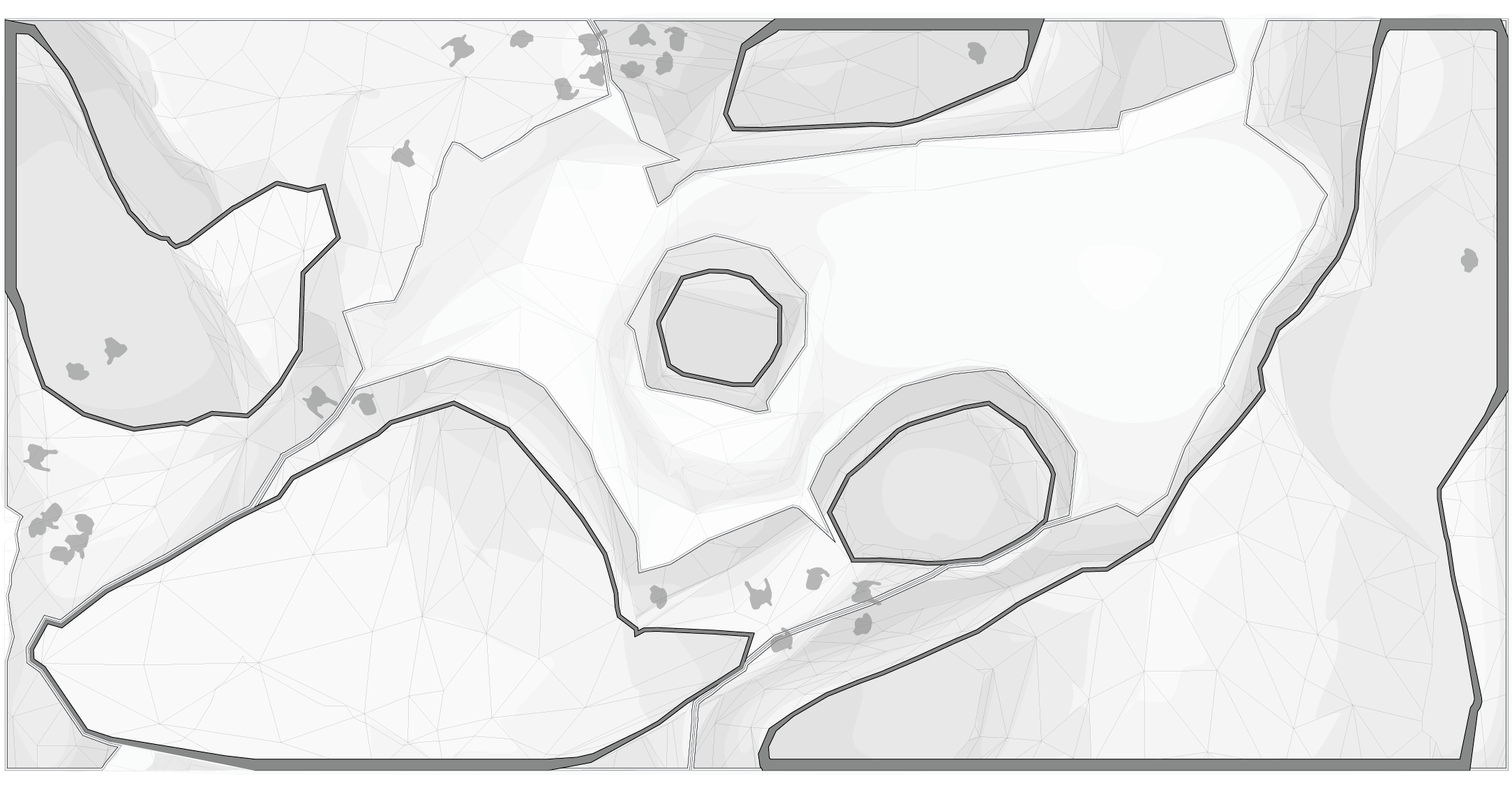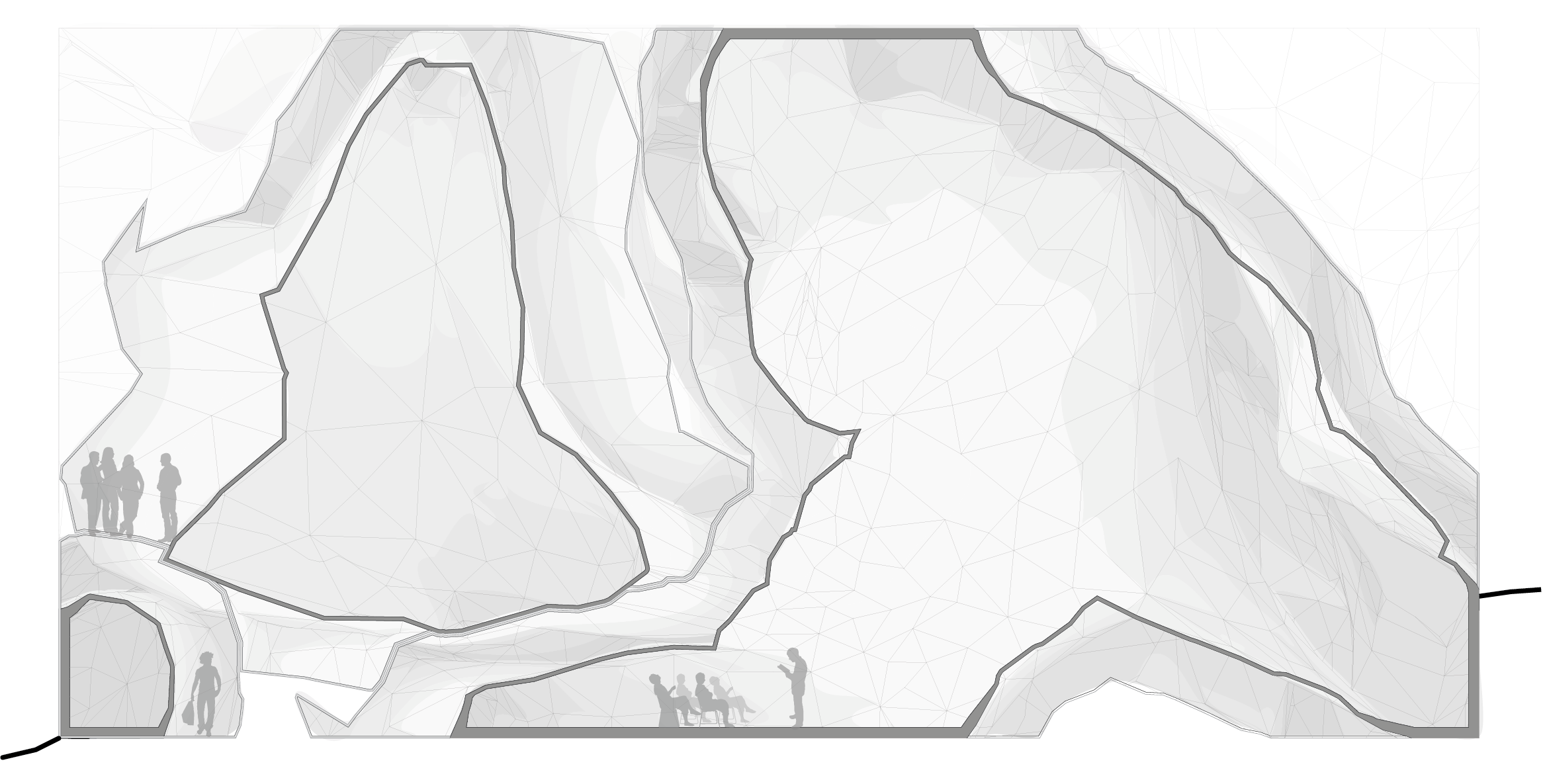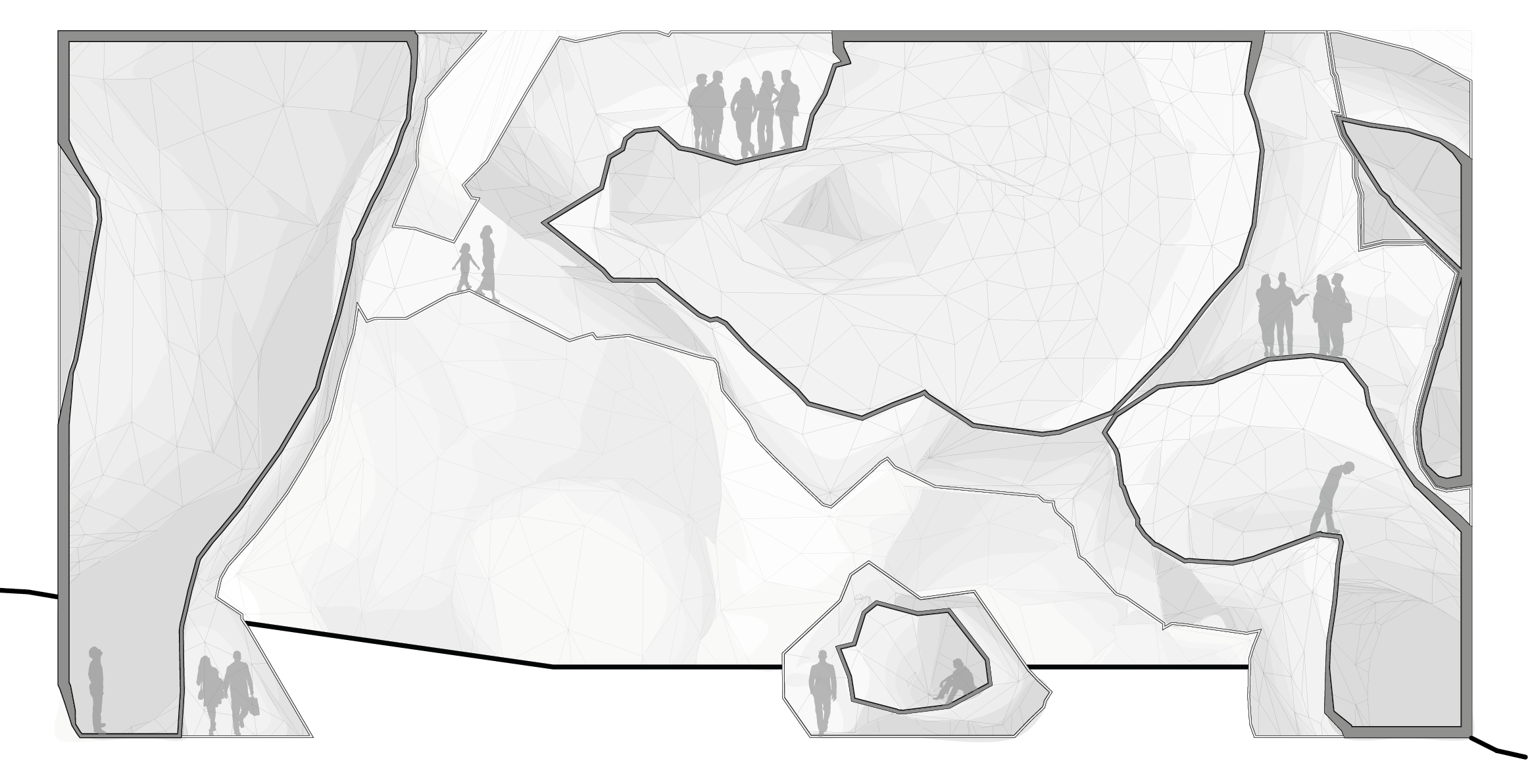Connect
Parametrically Determined Space
A 3D social network is simulated in Processing, variables include number of nodes, maximum distant of connection, degree of movement, and attraction. Nodes behave socially, making connections as they move through space and time, and flocking with their neighbors, although still acting independently. This creates a mesh of varying density and few outliers, showing that almost every node is connected.

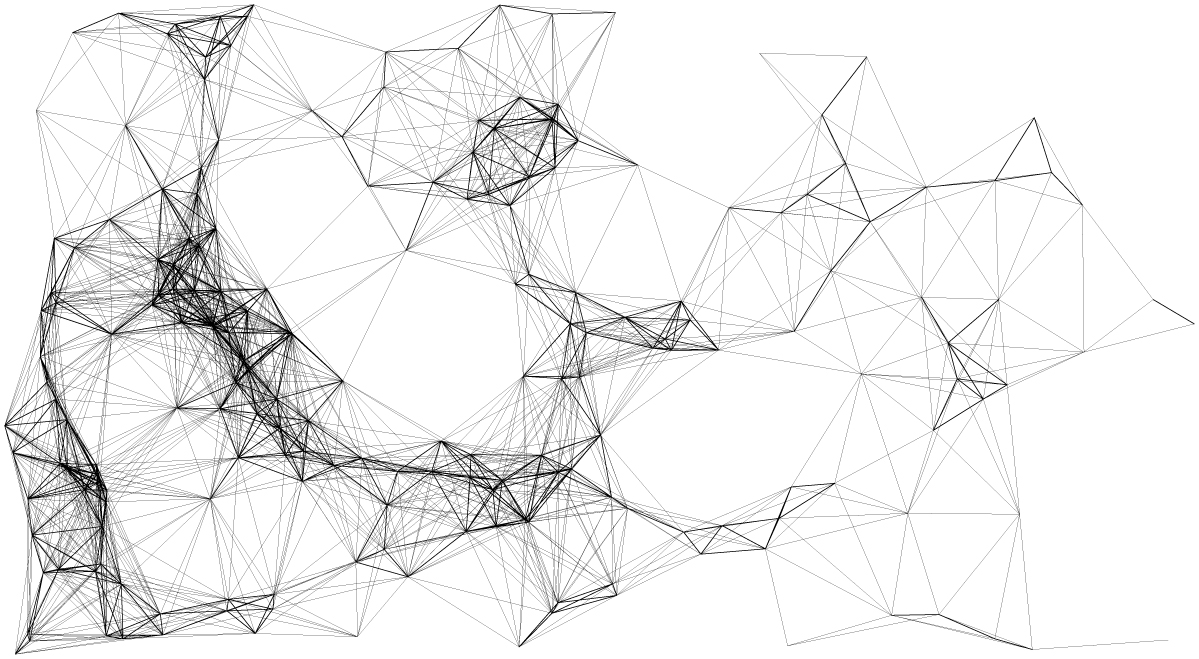
The second stage of this project translates the 3D line drawings into a solidified, buildable mass. In this design, the mass is created by enveloping the line mesh so that the mass is defined by the dense areas of connections and the paths created between them. The created space is explored through the construction of a mold (size of a cubic foot), then it's use to create a plaster representation of the space.
Drawings anticipate the mold and plaster cast:



The solid space was also 3D printed:
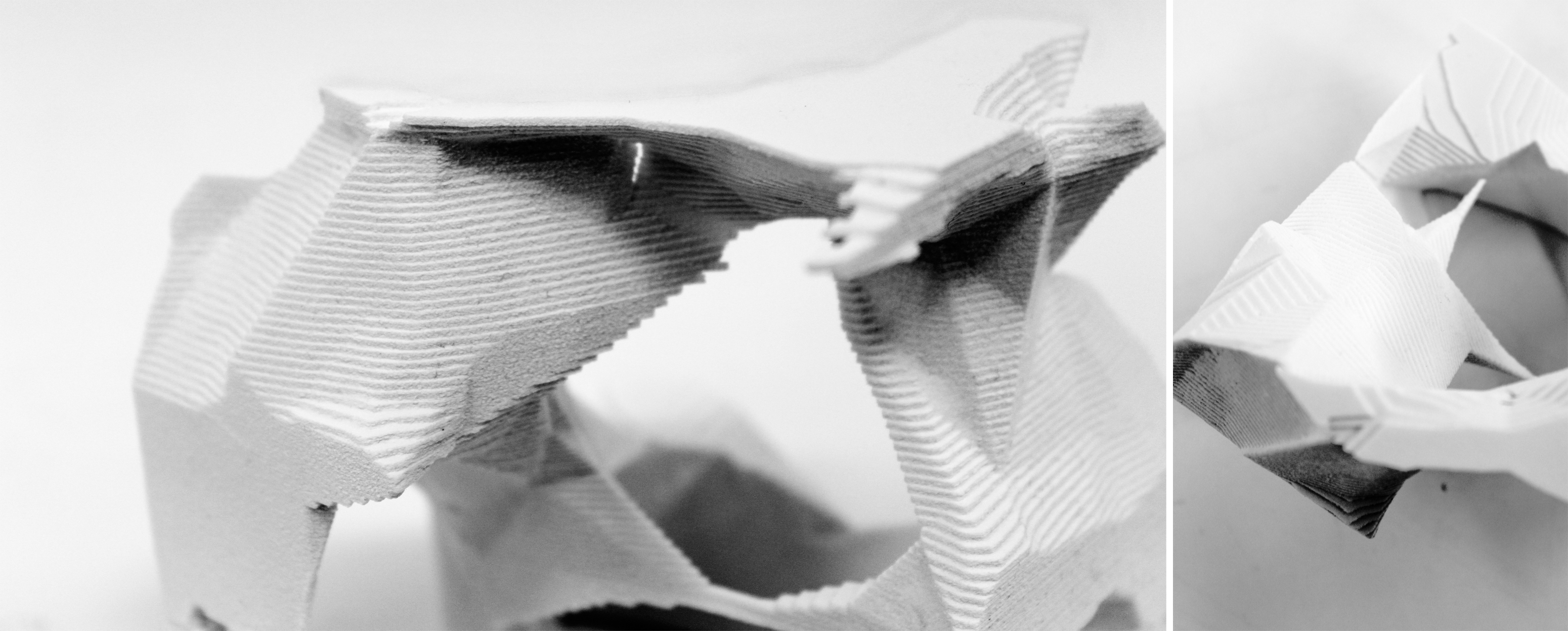
The final stage sees the space become a social facility, employing an inflatable skin which responds to daylight. In its inflated state, the pocket in between the structure and its outer walls creates a secondary means of connection throughout the spaces. Areas where the mesh was most dense become larger public areas, and users are encouraged to create new social connections as they can ambulate through both the main space and the pocket space by day. The inflatable skin filters sunlight, providing heat and soft light throughout the spaces.
Normal and Inflated States:

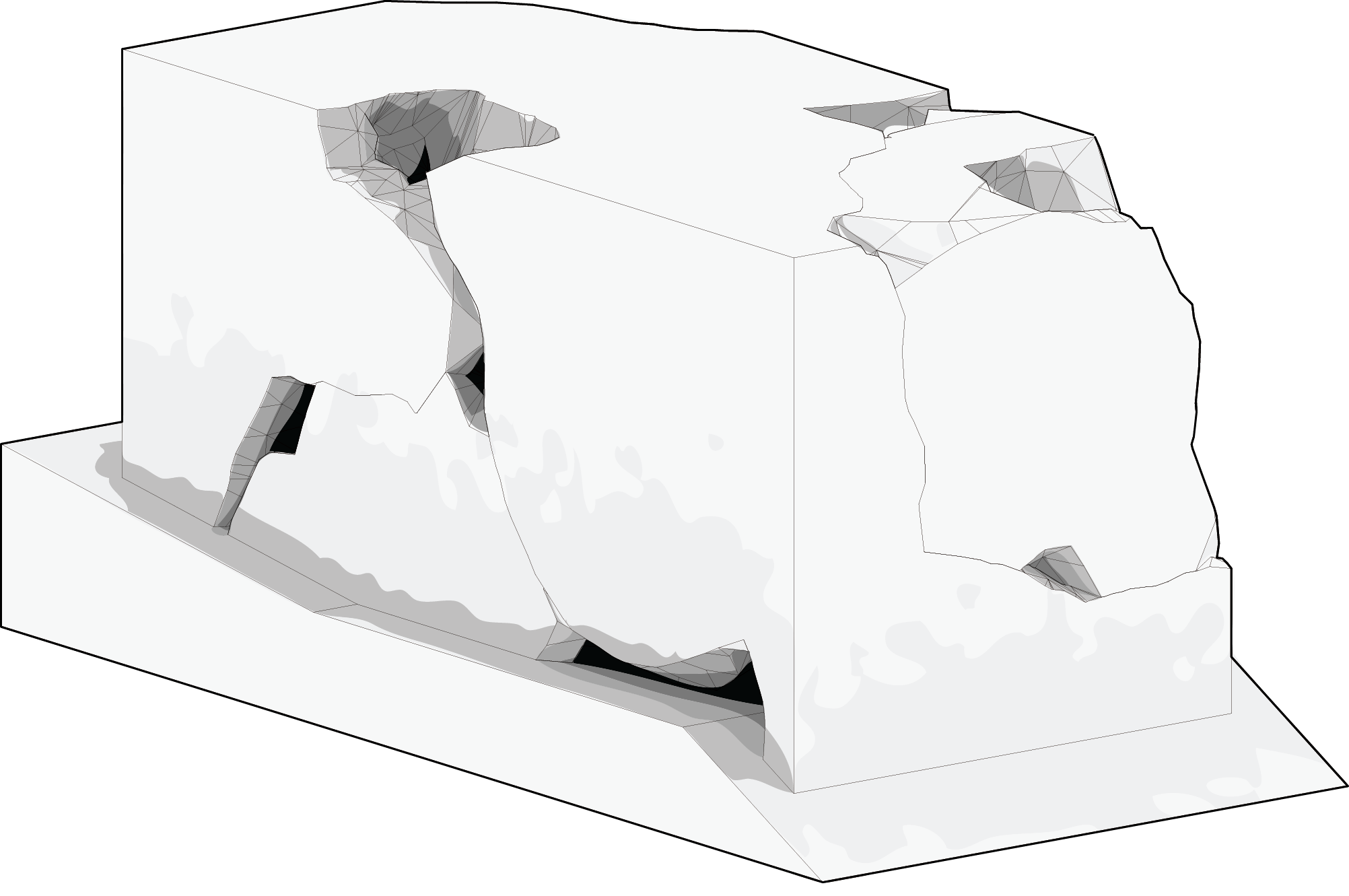
Plan and Sections, showing use and connectivity:
